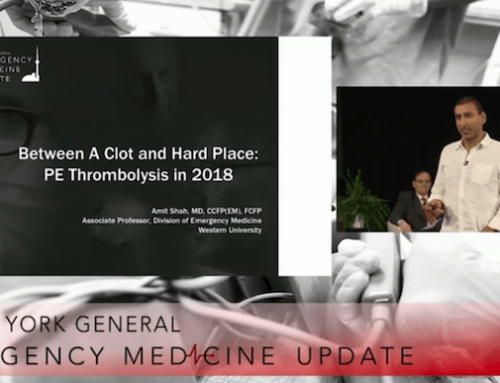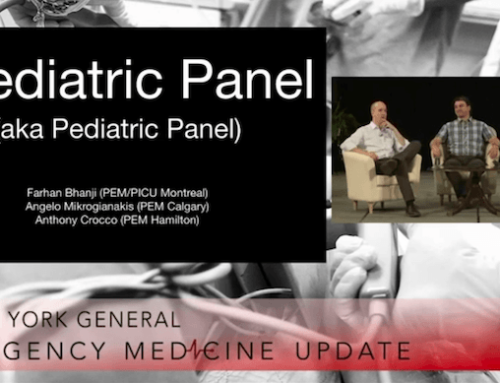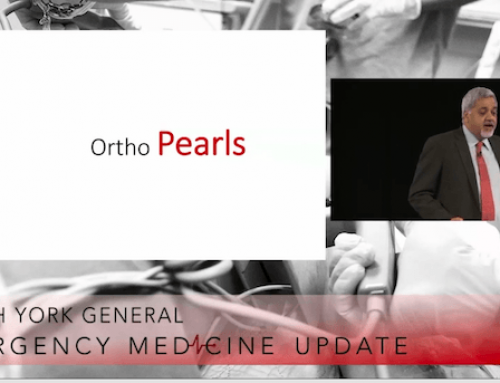EMU 365: Pediatric Trauma Pearls
Pediatric traumas are high acuity but low frequency situations that are stress provoking for emergency physicians. Dr. Mikrogianakis, Chief of Pediatric Emergency Medicine at Alberta Children’s Hospital gives his Top 10 Pediatric Trauma Pearls you can use to help with your practice.
Top 10 Pediatric Trauma Pearls
- Follow general ATLS principles (ABCDEs)
- almost all pediatric trauma cases result from blunt mechanisms that rely on effective trauma resuscitation
- Emergency surgeries are rare
- Maintain oxygenation at all times
- Pulmonary contusions are the most common lung injury owing to a cartilaginous skeleton
- Hemo/pneumothorax less common – less than 10% require chest tubes
- Beware of persistent tachycardia – sign of compensated shock
- Consider hemorrhage – especially in atypical spaces in young children (pelvis, long bones, subgaleal space)
- Hypotension is a late sign of uncompensated shock
- Transfuse blood products when needed
- If necessary, transfuse. Do not hesitate because of age. But note <5% of pediatric patients require MTP
- Pediatric volume is estimated to be 80ml/kg
- Tranexamic acid 15mg/kg
- Manage head injury well
- Without signs of increased ICP (most common): supportive therapy
- With signs of increased ICP (blown pupil or Cushing’s triad): elevate head at 30 degrees, 3% saline: 6-10ml/kg bolus, brief hyperventilation PaCO2 30-35mHg, neurosurgery for definitive management
- Call for advice/ support/ transport ASAP
- Do not delay transfer for advanced imaging unless it will change management or decision to transport
- Avoid hypothermia
- Hypothermia significantly affects perfusion, combined with acidosis can lead to significant coagulopathy
- Be mindful of analgesia to treat pain
- Splint all fractures
- Ensure adequate volume resuscitation before giving analgesia that may compromise hemodynamics
- Allow parents to be present
- Parents can assist with history taking and decrease patient anxiety
- Be mindful of non-accidental trauma
- Does the injury match the mechanism?
- Does the mechanism match the developmental capabilities of the child?
- Is the child sicker than you would expect for the described mechanism?
Speaker Bio
Dr. Angelo Mikrogianakis is the Chief of Paediatric Emergency Medicine at the Alberta Children’s Hospital and and Associate Professor at the University of Calgary, Alberta Children’s Hospital Research Institute. His research interests include the emergency diagnosis and treatment of concussion and Traumatic Brain Injury as well as prehospital and Emergency Department indicators of future problems.
Podcast Episode 95 – Pediatric Trauma with Suzanne Beno and Fuad Alnaji




What would Pediatric Trauma Look like from a first aid standpoint and were can I get Pediatric Trauma Training From a first aid standpoint